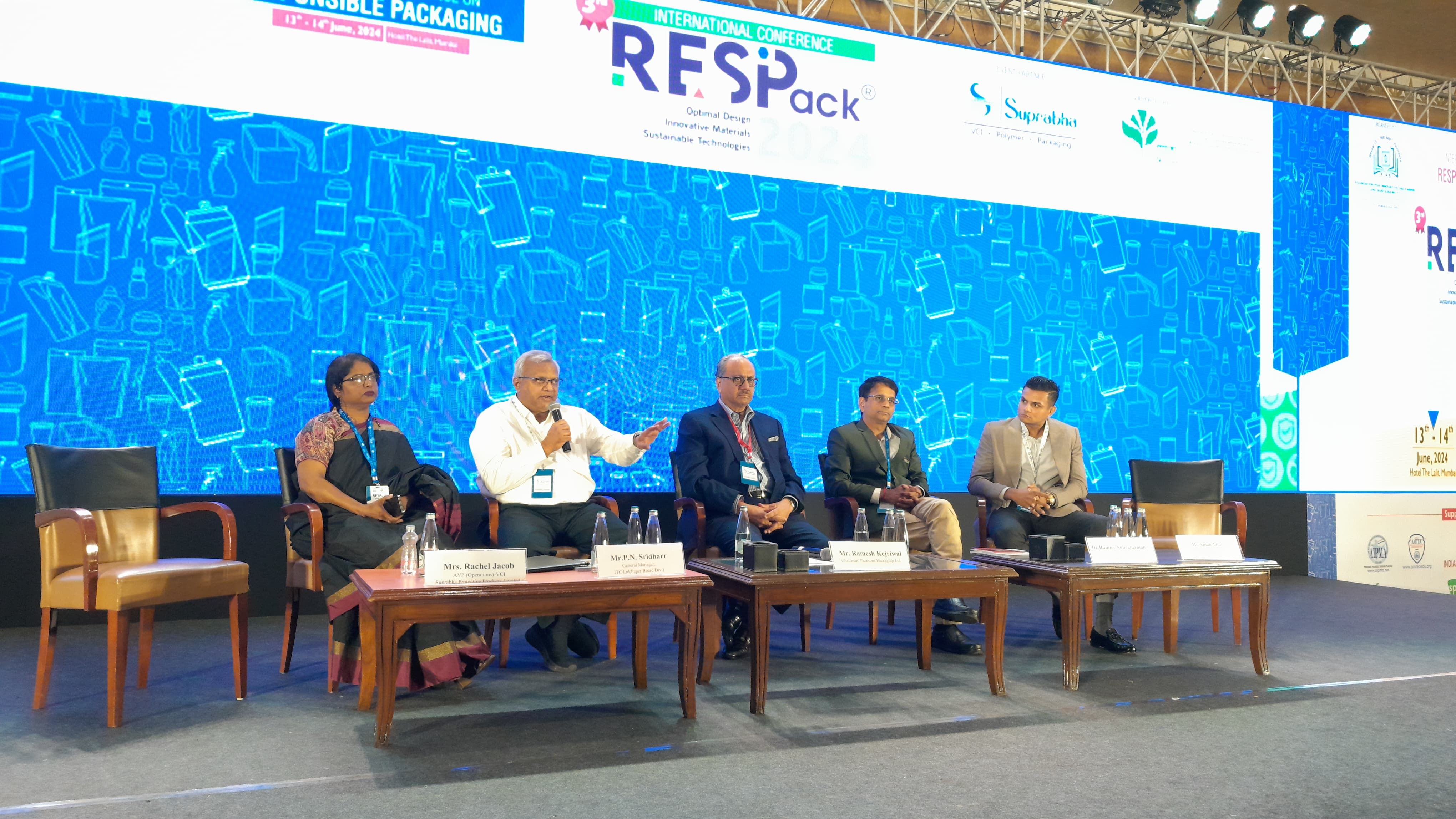Respack focuses on which sustainable solution to prioritise
The third edition of Respack at The Lalit in Mumbai scrutinised packaging, and how green solutions can be the tried-and-tested sustainability choice for the industry even as more esoteric offerings falter ....
13 Jun 2024 | 2172 Views | By Abhay Avadhani
Prof NC Saha of FIPS, in his welcome address, welcomed the audience to the third edition of Respack which will see presentations by 28 industry leaders, 16 panellists, six international speakers, 325 delegates, and 35 speakers. He said, “It will provide food for thought about how to increase sustainability and decrease waste.”
Said said, there will be focus sessions on metal packaging and cellulose-based packaging which are considered to be alternative materials. Besides this, the two-day conference will discuss innovative printing technology as well as biopolymeric materials which are considered to be an alternative sustainable materials to reduce carbon emission towards a circular economy
During the inaugural session, S Sivaram of Indian Institute of Science Education and Research (IISER), Pune shed light on the importance of recyclability. He said that by 2050, India will contribute 30-40% of the global plastics recycling market, out of which 85/90% will be polyolefins.
Sivaram said, “Recycling is antagonistic to circularity and the industry leaders must be very sensitive about how it deploys these terms. His cautionary message for the delegates was “The more you recycle your polyolefins, the more unfit it becomes for the circular economy.
Ashutosh Pandey of Earnst & Young GDS crunched some flexible packaging numbers across the globe. Also he touched upon reduction of last-mile delivery cost and the role packaging plays in it. He said, “60% of consumers make decisions based on the environmental impact of the product and packaging.”
Dr Sudhanshu of APEDA, Ministry of Commerce & Industry, Government of India spoke about agricultural packaging, exports and demand for innovative packaging. He said, “Packaging standards are important for exporters or manufacturers. In terms of export, there have been trial shipments of ethnic and unique products which enhance the market access of India agri products.”
Later, Aditya Mittal, head - commercial excellence India, Kellogg’s India, provided a perspective about retail and eCommerce. He told the delegates that global quick and easy commerce is a USD 45-bn + market. “Earlier, for eCommerce, almost all the sales were generated through navigation. Now, it is 50% navigation and 50% through search words.” Mittal highlighted key trends in organised retail and its impact on packaging in terms of functionality and convenience.
During the first knowledge session, Anton Wolfsberger of Borouge showcased the mega trends in packaging and circular economy. He said replacing one tonne conventional PP saves 2,100 CO2 equivalent to driving 17,000 kms of a new car in the EU.
Prabhu Narain Chakrawal, chief manager - petrochemicals, Indian Oil talked about the company’s innovations in polymeric materials such as MF 12, which provides 67% reduction in CO2.

Yasuhiro Nonako of Kurary focused on EVAL - high oxygen barrier materials. He said, “Met-EVOH structure can replace aluminium as well as met-PET structure. Met-EVOH with high moisture properties could prevent caking of dehydrated soup as well as aluminium structure.”
Later, during a panel discussion about the role of responsible packaging for sustainable packaging and innovations. Pratik Rane of Kenvue spoke about a refill pod, which reduces approximately 80% of the plastic weight.
Deepak Manchanda, thought leader, FIPS pointed out that in the 1970s and 1980s, there was an element of sustainability present in the package, due to simple living and minimal packaging. Now, the times have altered, and Manchandana said, we have to rethink our strategy accordingly.
Satish Chamyvelumani, business head, compostable division, Pakka spotlighted the design quotient in packaging. He said “The first thing that comes to mind is design for aesthetics, and design for manufacturing. These days, sustainability is a must, and that is one can entice the new-age consumers through aesthetics and eco-friendly solutions.”
Day one of the conference focussed on innovative sustainable materials; understanding the regulations related to packaging; gaining knowledge about alternative packaging materials like additives, cellulose-based packaging and biopolymers; understanding the initiatives taken by leading brand owners and FMCG companies towards sustainability; and finally understand the different types of post-consumer plastics waste recycling technology.
As Prof Saha told WhatPackaging? magazine, “Respack 24 is an ideal knowledge platform where the packaging industry has an opportunity to discuss and transfer the knowledge. We hope it will become the best platform for the good work produced by the industry”.
WhatPackaging? magazine’s take: At the conclusion of day one, one thing is clear. A lot of R&D is being carried out to develop new structures in flexible packaging materials. Plus exploration of alternative materials. There is a dire need to conduct a techno-economic feasibility study which is based on compliance to environmental regulations.